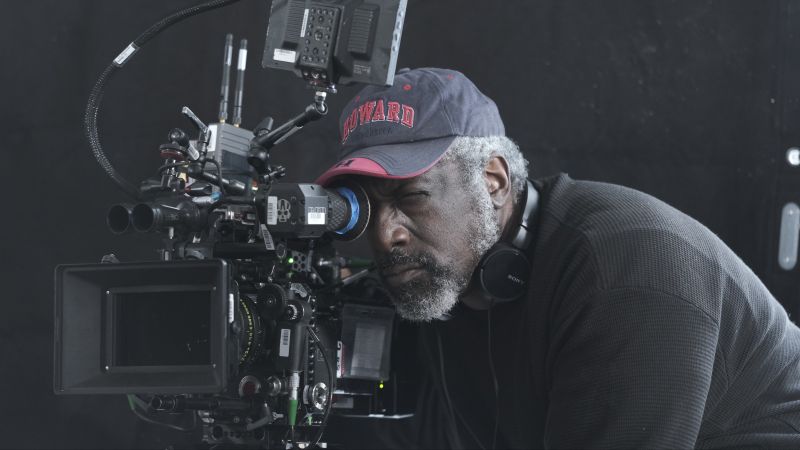
Kevin Grevioux, a multi-talented creator celebrated for his work on the “Underworld” film series and groundbreaking comic book characters like “Blue Marvel,” has built a career defined by imagination and originality. His passion for storytelling, rooted in his childhood fascination with monsters and mythology, continues to inspire his work across multiple creative mediums.
“My first love was dinosaurs because what are they but real monsters?” Grevioux said, reflecting on the origins of his creative interests. He explained how biblical references to creatures like the Behemoth in “Job” and dragons further ignited his imagination.
“All of that, you know, coming together really sparked my interest in cinema and comic books,” he said.
Growing up in the 1960s and 70s, Grevioux observed that filmmaking wasn’t a widely considered career path for Black creators.
Related Stories
Student Athlete of the Week: Anthony Torrence
CBR Hosts Home Ownership Summit for Veterans and Community
“Especially if you’re Black, the arts as far as film really wasn’t something you went into,” he said. “Those were for singers or athletes, but no one ever talked about being a screenwriter or director.”
Instead, Grevioux pursued science, earning an undergraduate degree in microbiology from Howard University and studying genetic engineering in graduate school. Although he didn’t complete his master’s program, he credited his academic background with instilling a curiosity and discipline that influenced his creative pursuits.
This blend of scientific precision and creative storytelling found its most iconic expression in “Blue Marvel,” a character Grevioux created to challenge traditional portrayals of Black superheroes.
“We hadn’t seen a Black character like that created by a Black creator,” he said. “Most of the superheroes we’ve known and loved have been created by white men, which is fine.”
With “Blue Marvel,” Grevioux confronted the complexities of race and heroism, setting the character’s story during the civil rights era.
“It really put him in the thick of that period and explored the realistic consequences of a Black man having that much power during a time when people were not ready for it,” he explained.
The character, conceived when Grevioux was just 12 years old, remains a cornerstone of his work and continues to inspire his current projects, including an upcoming creation called “Megas.” Transitioning from acting to roles behind the scenes, Grevioux gained a deeper understanding of storytelling dynamics.
“As a fan, you tend to ask a lot of questions—why did they go in this direction instead of that one?” said Grevioux.
“As a director, you have to take all of that and reformat it in a way that’s digestible to a larger audience while also appeasing everyone involved. It can be difficult but deeply satisfying.”
Grevioux emphasized that storytelling transcends mediums, whether it’s film, comics, or animation.
“Storytelling is storytelling,” he said. “Even though different mediums are disseminated in different ways, the essence of storytelling remains the same.” He urged aspiring creators to diversify their skills.
“You have to learn to diversify your creative lexicon. That way, you keep working.” Looking to the future, Grevioux acknowledged the growing influence of technology in storytelling, particularly artificial intelligence. “AI isn’t going away; it’s here to stay,” he said.
“You better figure out how to incorporate that into whatever it is you do, or else you’re going to be left behind.” At the same time, he encouraged creators to maintain their passion for original content, advising them to “be creating something new every six weeks and see where that takes you.”
One regret Grevioux expressed was not learning to draw at an early age. “Learn how to draw,” he said emphatically.
“You can be your own creator. You don’t have to hire anyone to conceive something for you, and that’s a powerful thing.” He believes artistic self-sufficiency is invaluable.

As a staunch advocate for originality, Grevioux spoke out against simply modifying existing characters to increase diversity.
“Don’t change an established white character to Black and call it a new character,” he said. “Create your own characters, your own stories, whole cloth.”
His work at DarkStormComics.com, where he has launched projects like “Dark Storm” and “Djinntara,” reflects this philosophy. These characters, he explained, are designed to push boundaries while exploring modern cultural complexities.
“We need to create our own superheroes, our own fantasy stories.”
However, he cautioned against supporting projects solely based on identity, urging audiences to prioritize quality and creativity instead.
“If we’re going to be successful at this, we need each other’s support, but it can’t just be about representation. It has to be about making great stories.”
Looking back on his career, Grevioux attributed much of his success to remaining open to new opportunities and embracing change.
“I came out here to be purely a writer, maybe a producer,” he said.
“I never wanted to act, but once you get into the industry, you kind of recognize that maybe you have a talent to work in another field for a while.”
As he continues to expand his creative portfolio, Kevin Grevioux remains committed to telling stories that resonate. His advice to aspiring creators is as practical as it is inspiring.
“Don’t be afraid to tackle anything. One thing can lead to another, and you never know where it might take you.”


